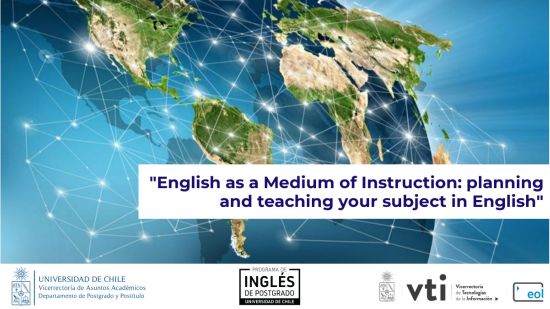In a globalized world, multilingualism has become increasingly important. In response to this, the progressive educational approach of Content and Language Integrated Learning (CLIL) is seeing global adoption as a key component of bilingual education policies. The CLIL method teaches both a content subject and a foreign language as the subject is taught in the non-native language, integrating content learning with language acquisition.
As English is the lingua franca of international communications, this bilingual education approach is increasingly used in English as a foreign language (EFL) instruction, with many countries instituting programs and policies to support CLIL integration in education initiatives. Before exploring some of these policies that are expanding the adoption of CLIL around the world, let’s first consider the progression of this language and content-learning approach and its benefits to both learners and national economies.
Looking for comprehensive CLIL training to launch your school’s program? Learn more about Bridge’s Specialized Certifications in Content and Language Integrated Learning (CLIL).
Pioneering CLIL implementation
The term CLIL was first coined in 1994 by David Marsh and Do Coyle, professors at the University of Jyväskylä in Finland. The idea of content and language-integrated learning came about as schools and governments in Europe began realizing the benefits of bilingualism.
While it first gained popularity in Europe, the idea soon spread around the world. While other models of language immersion education predated the CLIL method, CLIL differed in its equal focus on content and language mastery. For other immersion programs, promoting fluency was the primary goal, and content learning was considered secondary. CLIL also differed in that language objectives became integrated with content objectives in the curriculum, so teachers plan lessons that include both content and language learning goals.

Promoting both subject knowledge and language skills
Today, CLIL is often thought of as an umbrella term that describes both learning a content subject through the medium of a foreign language and learning a foreign language by studying a content-based subject. Teachers using the CLIL approach integrate language objectives into the curriculum and focus more on fluency versus accuracy and the language errors that are a natural part of learning.
Learning in a CLIL classroom is long-term, often five or more years, as students learn the new language in the context of subject learning. Natural language development is the focus as language is seen and used in real-life situations.
Explore engaging sample CLIL lesson plans for the ESL/EFL classroom.
Challenges of CLIL adoption
Although many countries have initiated educational policies that support or promote the adoption of CLIL, a common challenge is effective training in this bilingual teaching method for teachers.
Teachers must not only be proficient in the language of instruction and well-versed in the subject matter but also must understand the CLIL methodologies that significantly differ from traditional teaching approaches. Additionally, the curriculum needs to align with the country’s national education standards and be flexible enough to accommodate diverse student proficiency levels in both the subject matter and language.
Despite these challenges, recognition of the value of multilingualism continues to drive CLIL adoption around the world. Improved language skills enhance job prospects and economic opportunities for students and promote cultural understanding and exchanges. Bilingual students also typically perform better academically and have enhanced cognitive skills. These benefits positively impact local and national economies, and CLIL is an efficient and effective way to promote multilingualism.
Economic benefits for countries driving multilingualism
The economic benefits for countries driving multilingualism are vast. Beyond the benefits of enhanced cognitive abilities and problem-solving skills of students who will enter the workforce, multilingualism facilitates international trade by improving communications with global partners and bettering understanding of foreign markets and customs.
Countries with a multilingual workforce also attract multilingual corporations that can more easily navigate local and international markets. Multilingualism also increases tourism as it is easier for tourists to engage with local services, increasing tourism revenue.
A workforce will also be more competitive and innovative as they can work in diverse environments and engage in the exchange of ideas and knowledge across borders. Lastly, a multilingual society can lead to a more dynamic and resilient economy as it better integrates immigrants, promoting social cohesion and stability.

The global CLIL adoption movement
As recognition of the benefits of CLIL in bilingual education grows, governments around the world are instituting policies to promote CLIL instruction at all education levels. Let’s look at some national initiatives.
The multilingual policy of the European Union (EU)
The EU has been at the forefront of CLIL adoption, advocating for multilingual education as a cornerstone of its educational strategy. The drive for citizens to master at least two foreign languages is behind the widespread push for the implementation of CLIL across EU members.
Spain’s notable example as a leader in bilingual education
With its focus on bilingual education, Spain has integrated CLIL into both primary and secondary education. In regions like Madrid and Catalonia, extensive bilingual programs promote learning English alongside core subjects like history and science.
Learn how to teach English in Spain, either in person or online.
Italy and Germany’s expanding CLIL programs
Both Italy and Germany have also embraced CLIL, continuing to expand its integration into their curricula. Italy’s Ministry of Education mandates CLIL for upper secondary schools, while Germany allows individual states to develop tailored CLIL programs.
Asia’s growing development of multilingual education
Japan and China have also shown significant interest in CLIL. For example, Japan’s Ministry of Education, Culture, Sports, Science, and Technology (MEXT) supports CLIL education efforts through funding and teacher training programs, encouraging its adoption in schools.
In China, CLIL is increasingly the mode of instruction in international schools and there’s increasing integration of this method in higher education. The government’s focus on enhancing English language skills to compete globally has led to the integration of CLIL in subjects like math and science.
Find out everything you need to know to teach English in Japan with the JET program.
The Americas’ diverse approaches to CLIL
A growing number of countries in North, Central, and South America are instituting policies to support the integration of CLIL methods in primary, secondary, and post-secondary schools to support multilingualism. In some cases, the movement is in the emerging stages, and in others, policies are seeing widespread use of CLIL practices as a long-term focus on bilingual education has created systems of training and continued professional development in CLIL methodologies. Let’s look at an overview of CLIL adoption in the Americas.
Canada’s commitment to multiculturalism and multilingualism
The bilingual nature of Canada can be seen in its commitment to multiculturalism and multilingualism. The Canadian immersion programs that originated in the 1960s reflects the country’s commitment to bilingualism and biliteracy and this focus continues as provinces like Quebec and Ontario implement CLIL in both French and English schools.
United States sees emerging CLIL movement
CLIL is still emerging in the United States, but states like California and New York have introduced CLIL in schools to foster bilingualism and better prepare students for today’s globalized workforce.
Argentinian government’s support of CLIL in bilingual and private schools
In Central and South America, CLIL is gaining increasing traction due to its dual focus on content and language. Argentina’s government supports bilingual education, and CLIL is used in bilingual schools for subjects like history and science and is increasingly adopted in many private schools.
Chile’s integration of CLIL with Ministry of Education support
Chile’s Ministry of Education promotes CLIL instruction, particularly in primary and secondary education, and the English Opens Doors Program aims to improve English proficiency through CLIL.
Colombia’s National Bilingualism Program
CLIL is also integrated into Colombia’s National Bilingualism Program, with a focus on training teachers to use CLIL methods, especially in public schools. In 2023, Bridge began a partnership with Universidad del Rosario to support this initiative, providing CLIL training to university faculty. The university offers CLIL classes in subjects like business, engineering, and humanities. The success of the partnership has paved the way for continued collaborative training opportunities.

Mexico & Peru’s missions to support bilingual education initiatives
In Mexico, initiatives like the National Program for English in Basic Education (PNIEB) aim to improve English proficiency across the country and support CLIL as part of some private and public school curricula. Similarly, Peru’s Ministry of Education supports CLIL methodologies to teach both English and Spanish alongside content subjects to support bilingual education.
Multilingual education in South Africa
With 11 official languages, the linguistic landscape of South Africa presents both challenges and opportunities. CLIL is seen as a path to overcoming language divides and improving educational outcomes, and policies promoting its gradual implementation are being integrated to promote multilingual education.
CLIL in the Middle East
The United Arab Emirates (UAE) has become a hub for international education, and CLIL is playing a significant role. The UAE’s Vision 2021 emphasizes the importance of bilingual education, and CLIL’s implementation in many public and private schools is enhancing English proficiency and academic achievements.
The global adoption of CLIL is driven by a combination of educational policies, cultural contexts, and a growing need for multilingualism in a globalized world. Around the world, CLIL is transforming education as it offers students a way to master both language and subject knowledge concurrently. As more countries recognize the benefits of CLIL, it will likely become a cornerstone of 21st-century education.











